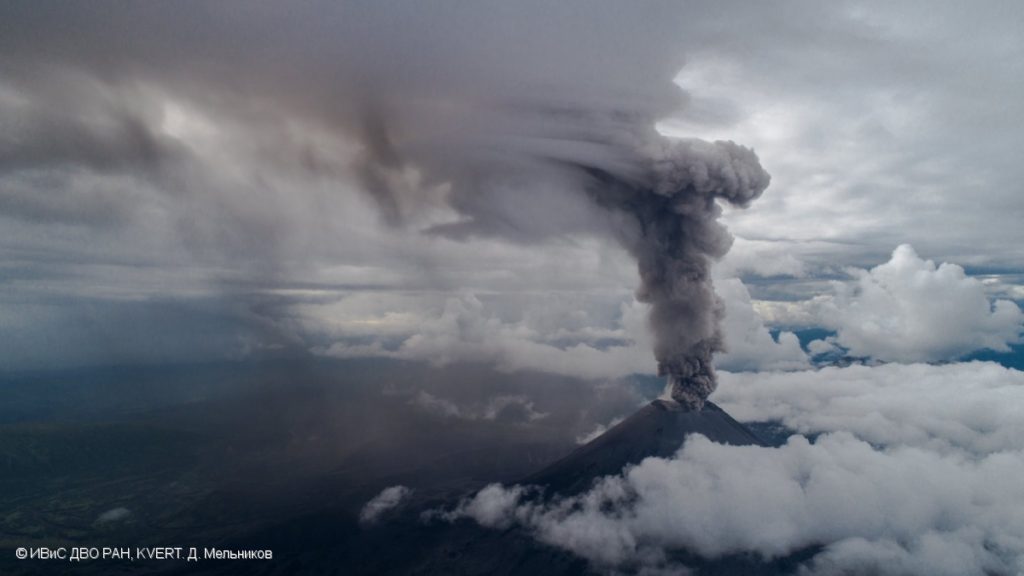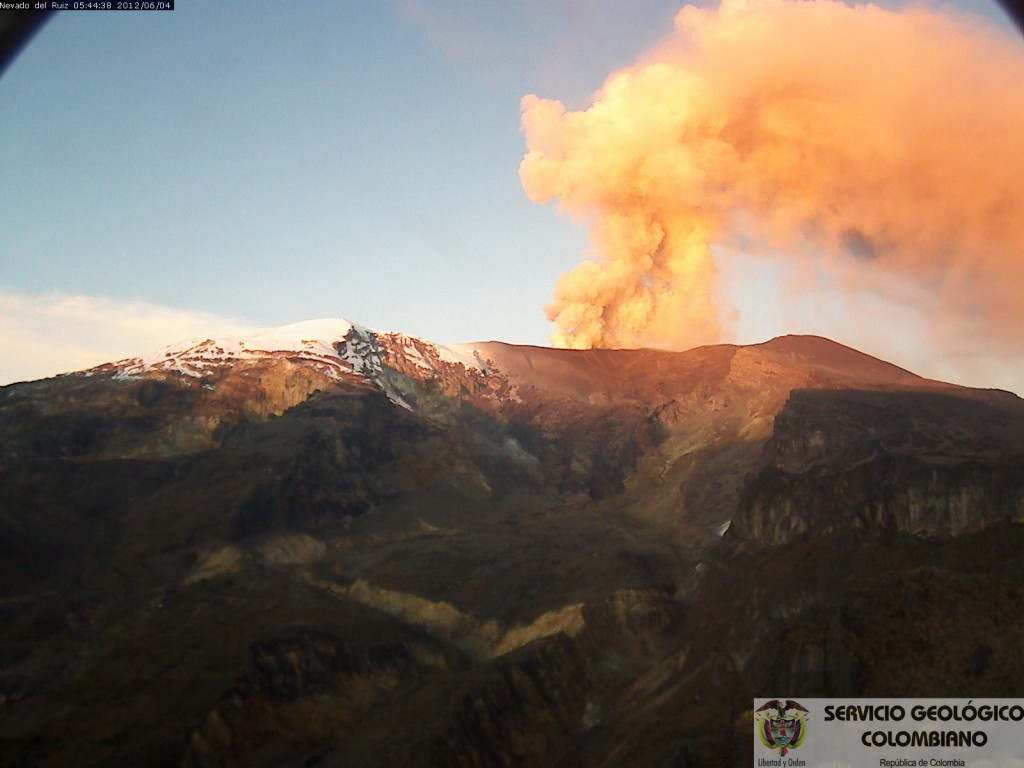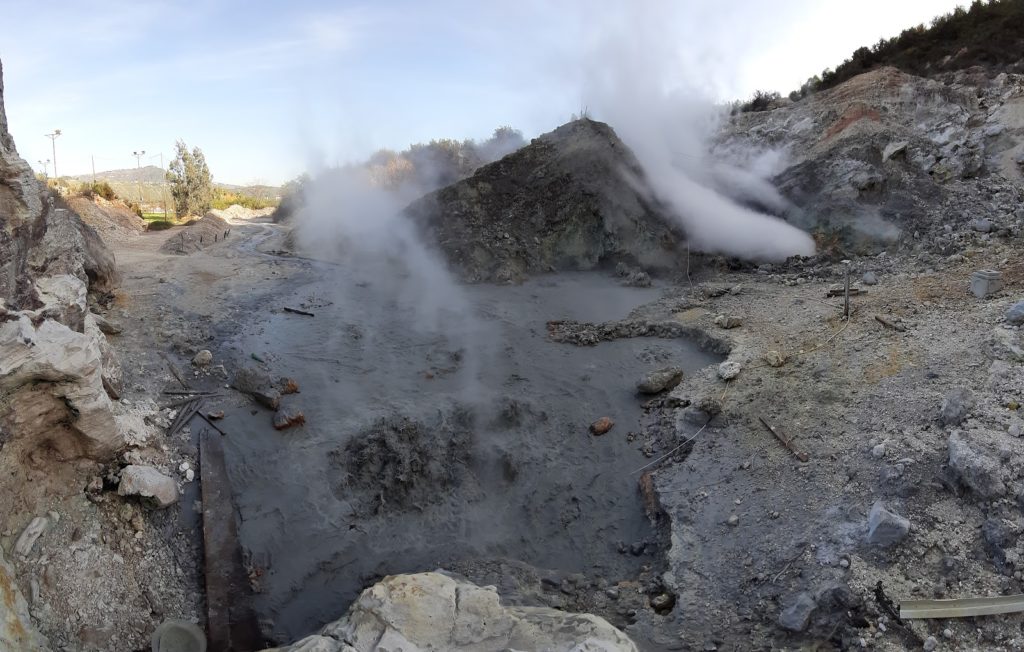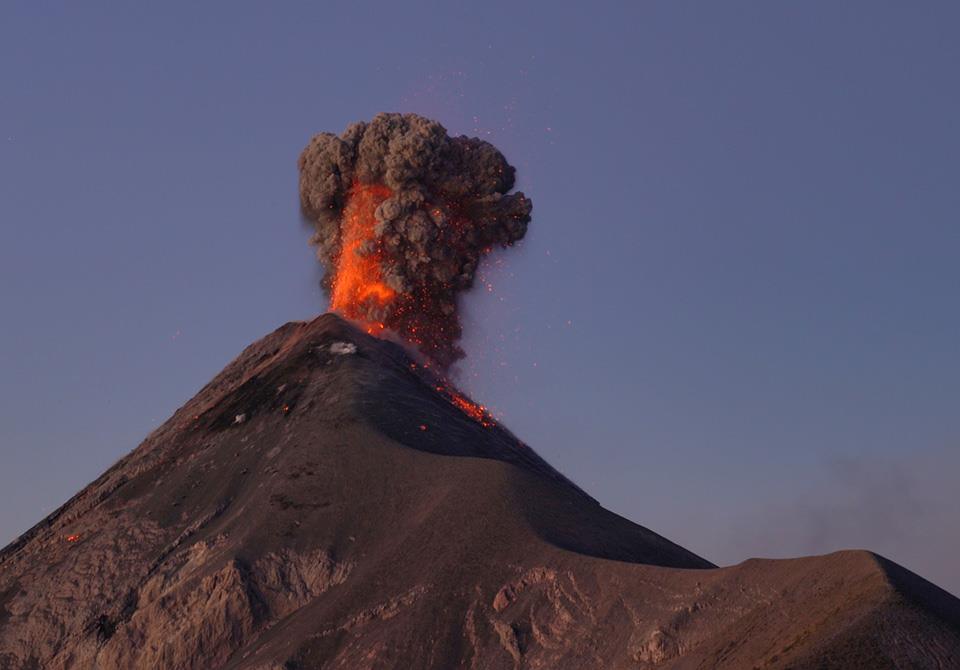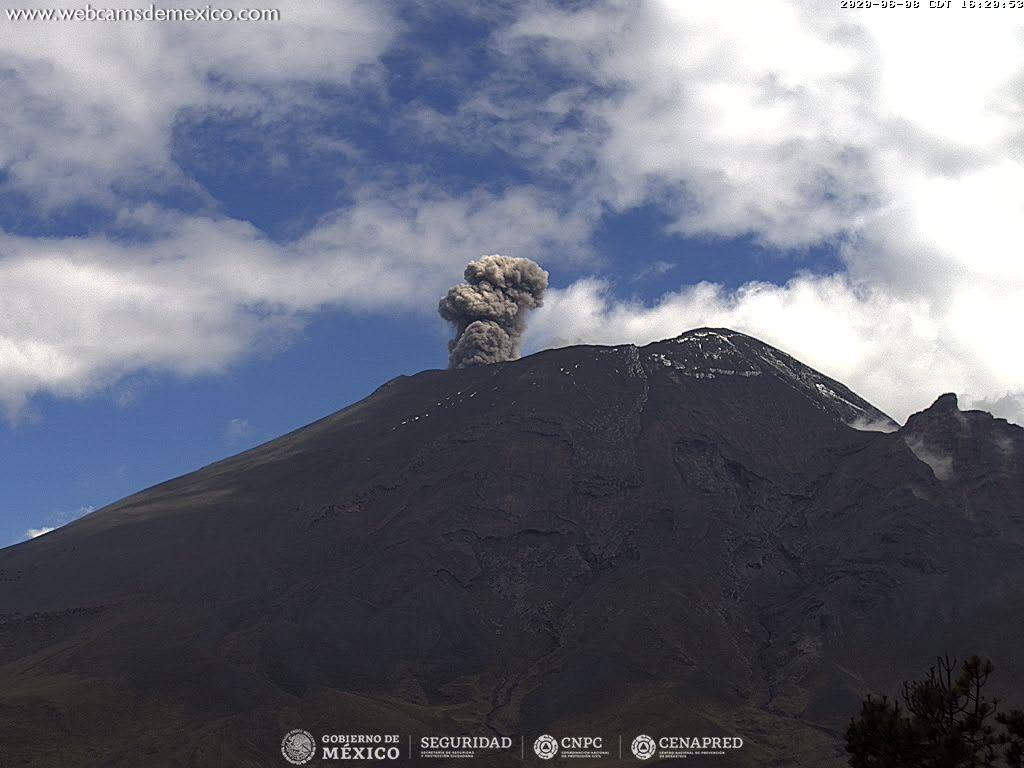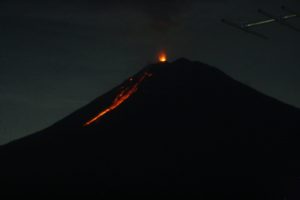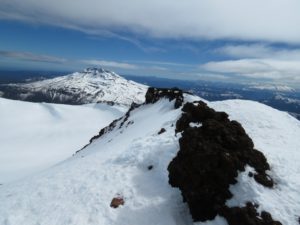June 12 , 2020 .
Kamchatka , Karymsky :
54.05 N, 159.44 E;
Elevation 4874 ft (1486 m)
Aviation Colour Code is ORANGE
A moderate gas-steam activity of the volcano continues. Ash explosions up to 16,400-23,000 ft (5-7 km) a.s.l. could occur at any time. Ongoing activity could affect low-flying aircraft.
A moderate gas-steam activity of the volcano continues. According to satellite data, a weak thermal anomaly over the volcano was noting on 10-11 June; the volcano was quiet or obscured by clouds in the other days of week.
Source : Kvert .
Photo : D. Melnikov, IVS FEB RAS, KVERT.
Colombia , Nevado del Ruiz :
Weekly activity bulletin of the Nevado del Ruiz volcano
The level of activity continues at the level of yellow activity or (III): changes in the behavior of volcanic activity.
Regarding the monitoring of the activity of the Nevado del Ruiz volcano, the COLOMBIAN GEOLOGICAL SERVICE reports that:
The seismicity generated by the fracturing of the rocks showed a slight increase in the number of earthquakes and a decrease in the seismic energy released, compared to the previous week. This type of seismicity was mainly located in the Arenas crater and in the South-South-West, South-East and North-East sectors of the volcano, at depths varying between 0.2 and 6.2 km. The maximum magnitude recorded during the week was 0.8 ML (local magnitude) corresponding to the earthquake recorded on June 3 at 10:18 p.m. (local time) located 5.7 km east-south-east of the crater. Arenas, 3.4 km deep.
The occurrence of several seismic events of the « drumbeat » type, earthquakes associated with the fracturing of rocks is highlighted. These episodes were characterized by a low level of energy.
Seismicity related to fluid dynamics inside volcanic conduits presented a number of recorded events, with levels of seismic energy released similar to those of the previous week.
This seismic activity was characterized by the occurrence of continuous volcanic tremors, tremor pulses, earthquakes of the long period type and of the very long period type. These seismic events presented varying energy levels and spectral contents. Some of these signals were associated with small emissions of gas and ash, which were confirmed by cameras installed in the area of the volcano. The direction of dispersion of the ashes was mainly oriented to the North-West of the volcanic structure.
The Nevado del Ruiz volcano continues at the level of yellow activity.
Source : SGC.
Photo : Archive SGC.
Italy , Campi Flegrei :
Weekly bulletin from June 02, 2020 to June 09, 2020
(Updated June 09, 2020 at 12:00 p.m. local time)
SUMMARY OF ACTIVITY STATUS
In light of the monitoring data, it is underlined:
1) SEISMICITY: During the last week, 11 low energy earthquakes were recorded in the Campi Flegrei area (Mdmax = 0.5).
2) DEFORMATIONS: The slight increase in lifting speed emitted in recent weeks is not confirmed by the reprocessing of the data. The average value of the lifting speed in the maximum deformation zone, recalculated from January 2020, is around 6 mm / month. The lift recorded at the RITE GPS station has been approximately 62 cm since January 2011.
3) GEOCHEMISTRY: The soil CO2 fluxes measured last week did not show any significant changes after the drop in values recorded at the beginning of May, probably linked to local variations in the emission site measured by the station. The temperature of the main fumarole of Pisciarelli showed an average value of around 115 ° C.… / …
Geochemistry
The values of the soil CO2 flux recorded continuously by the FLXOV8 station in the Pisciarelli area (North-East side of the Solfatara), highlight the persistence of the multi-annual trends already identified previously (see monthly reports). The soil CO2 fluxes measured last week did not show any significant changes after the drop in values recorded at the beginning of May, probably linked to local variations in the emission site measured by the station. During the past week, the temperature of the main Pisciarelli fumarole recorded continuously showed an average value of ~ 115 ° C, in line with the values recorded in the previous periods. It should be noted that this fumarole being a natural system in constant evolution, with macroscopic variations of the emission site, the temperature recorded continuously may not always coincide with the maximum emission temperature.
Source : INGV.
Lire l’article : http://www.ov.ingv.it/ov/bollettini-campi-flegrei/Bollettino_Flegrei_2020_06_09.pdf
Photo : Tullio Ricci, décembre 2019.
Guatemala , Fuego :
Atmospheric conditions: Cloudy.
Wind: North
Precipitation: 1.40 mm
Activity:
The Fuego volcano observatory reports low to moderate explosions, in a range of 5 to 8 per hour, accompanied by columns of gray ash, at a height of 4500 to 4800 (14.764 to 15.748 feet) which are scattered south over a distance of 10 to 15 kilometers. The explosions caused a fall of fine ash in the area of the villages of Panimaché I, Morelia, Finca Palo Verde and Yepocapa.
Incandescent pulses were projected above the crater, 150 to 300 meters (492 to 984 feet) and weak to moderate avalanches were observed towards the ravines of Trinidad, Ceniza and Santa Teresa. The explosions generated low to moderate rumblings with shock waves, with low to moderate rumblings, which caused vibrations in the houses near the volcano. Weak sounds were heard at intervals of 5 to 7 minutes. Some of the material expelled reached the edge of the vegetation without hearing any associated noise.
Source : Insivumeh .
Photo : Martin Rietze.
Mexico , Popocatepetl :
June 11, 11:00 a.m. (June 11, 4:00 p.m. GMT)
In the past 24 hours, 162 exhalations accompanied by water vapor, volcanic gases and small amounts of ash have been identified according to the monitoring systems of the Popocatépetl volcano. Due to weather conditions in the region, it was not possible to estimate the height of the emissions. In addition, 78 minutes of tremors were recorded.
From the first hours of the morning and at the time of this report, a cloudiness is observed in the area which prevents seeing the crater. If a major broadcast occurs, it will broadcast to the southwest.
CENAPRED urges not to get near the volcano and especially the crater, because of the danger involved in the fall of ballistic fragments and, in the event of heavy rain, to move away from the bottom of the ravines because of the danger of mud and debris.
The Popocatépetl volcanic alert signaling light is in YELLOW PHASE 2.
Source : Cenapred .


